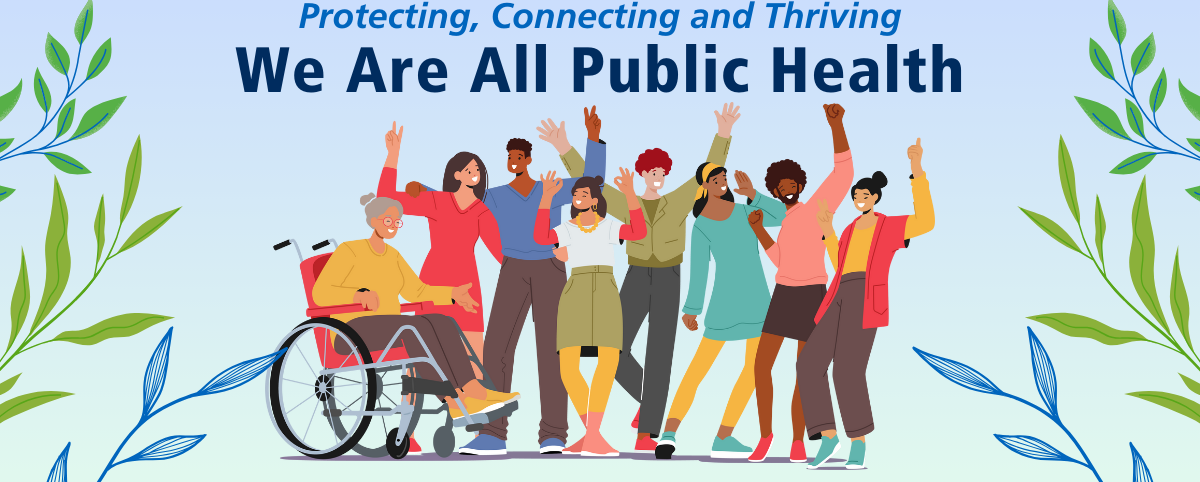Special Section Examines Health Impacts of Extreme Heat and the Disproportionate Risks for Certain Population Groups
(Washington, DC – March 14, 2024) – Ready or Not 2024: Protecting the Public’s Health from Diseases, Disasters, and Bioterrorism, released today by Trust for America’s Health, identifies key gaps in national and state preparedness to protect residents’ health during emergencies and makes recommendations to strengthen the nation’s public health system and improve emergency readiness.
As the nation experiences an increasing number of infectious disease outbreaks and extreme weather events, the report found that while emergency preparedness has improved in some areas, policymakers not heeding the lessons of past emergencies, funding cuts, and health misinformation are putting decades of progress in public health preparedness at risk.
Based on nine indicators, the report tiers states, and the District of Columbia, into three readiness levels: high, middle, and low. This year’s report placed 21 states and DC in the high-performance tier, 13 states in the middle-performance tier, and 16 states in the low-performance tier.
High Tier – 21 states & DC
AL, AZ, CO, CT, DC, FL, GA, KS, MA, ME, MS, NC, NE, NJ, OH, PA, RI, SC, TN, VA, VT, WA
Middle Tier – 13 states
AR, DE, IA, ID, IL, MD, MO, MT, NH, NM, OK, UT, WI
Low Tier – 16 states
AK, CA, HI, IN, KY, LA, MI, MN, ND, NV, NY, OR, SD, TX, WV, WY
The report is designed to give policymakers actionable data and benchmarks to improve their jurisdiction’s readiness through new and sustained investment in public health infrastructure, modern data systems, a larger and more diverse public health workforce, and collaboration between public health and healthcare systems, and both systems’ ability to surge capacity in response to emergencies. Additional areas of responsibility for the public health system are enhancing vaccine access and monitoring municipal water systems safety.
“This report underscores the need for comprehensive investment in public health infrastructure and preparedness and highlights the importance of addressing the disproportionate effects of underinvestment in public health on communities of color and other groups that have been underserved or marginalized,” said Dr. J. Nadine Gracia, President and CEO of Trust for America’s Health. “Recent public health emergencies, from wildfires to infectious disease outbreaks, not only reveal the imperative for a modernized public health system they also highlight the intrinsic link between the overall health of a community and its ability to be resilient during an emergency. Focusing on eliminating health disparities, advancing health equity, and stemming the rise in chronic diseases is essential for enhancing the nation’s emergency preparedness.”
The report’s special section discusses the increasing health risks from extreme heat, including for particular population groups: people who live in under-resourced communities, people living in urban heat islands or without air conditioning, people who work outdoors, people with chronic diseases, pregnant individuals, infants, children, and older adults. In 2022, more people died in the U.S. due to extreme heat than from any other single type of weather event.
The report’s findings showed both areas of strength in the nation’s health emergency preparedness and areas that need attention.
Areas of strong performance include:
- A majority of states have made preparations to expand healthcare and public health laboratory capacity in an emergency. As of the end of 2023, 39 states participate in the Nurse Licensure Compact, which helps facilitate emergency response efforts by allowing nurses to work in multiple member states, both in person and via telehealth, without the need for additional state licenses. Additionally, 46 states and the District of Columbia have written plans for the expansion of public health laboratory services during health emergencies.
- Most states (43) and the District of Columbia are accredited in the areas of public health or emergency management, with many accredited in both.
- A majority of states (at least 37) and the District of Columbia either maintained or increased their public health funding during fiscal year 2023. State investment in public health is particularly important because most federal funding in response to the COVID-19 pandemic was temporary, one-time funding.
Areas that need attention include:
- Too few people are vaccinated against seasonal flu. During the 2022-2023 flu season, only 49 percent of the population (ages 6 months and older) was vaccinated against the flu, well short of the 70 percent goal established by Healthy People 2030. There is concern among public health experts that misinformation about the COVID-19 vaccine could be impacting the uptake of other vaccines.
- On average, only 25 percent of acute care hospitals in states earned a top-quality patient safety grade in fall 2023. Hospital safety scores measure performance on issues such as healthcare-associated infection rates, intensive-care capacity, and an overall culture of error prevention – all critical for performing at their best during health emergencies.
- On average, only 55 percent of U.S. workers used paid time off during the period from March 2018 to March 2023. Access to paid time off is an important readiness measure because workers who go to work sick risk spreading infections in the workforce and throughout the community.
Policy action is needed:
The report contains recommendations for policy actions across both public and private sectors that would create stronger public health preparedness, including:
- Congress should enhance and modernize public health infrastructure by investing $4.5 billion per year to support foundational public health capabilities at the federal, state, tribal, local, and territorial levels, including investments in data systems and the public health workforce.
- Congress should empower CDC to collect public health data in a timely and coordinated manner, and the U.S. Department of Health and Human Services (HHS) and all jurisdictions should ensure timely, complete, and disaggregated data collection and reporting. Together, these will enable faster and more effective detection and response to health emergencies.
- Policymakers should prioritize rebuilding trust in public health agencies and leaders. Public health policy decisions should always be based on the best available science and free from political considerations, and federal agencies should be equipped to provide timely and clear public health guidance.
- Congress should provide at least $1.1 billion per year to support vaccine infrastructure and equitable delivery of vaccines. States should minimize vaccine exemptions for schoolchildren, and healthcare facilities should increase vaccination rates among healthcare workers.
- Congress should significantly increase investments in public health initiatives to prevent, detect, and contain antimicrobial resistance.
- Congress and states should provide job-protected paid leave to contain the spread of outbreaks and protect health.
- Congress should provide significant funding for medical countermeasures and should work with the private sector to plan for their distribution and dispensing when needed.
- Congress, HHS, and healthcare leaders should strengthen healthcare readiness and recovery, and state and local emergency planners should work with the healthcare sector to integrate healthcare delivery into emergency preparedness and response.
- Congress should increase investments in programs that identify and mitigate the health impacts of climate change, environmental hazards, and extreme weather.
Trust for America’s Health is a nonprofit, nonpartisan public health policy, research, and advocacy organization that promotes optimal health for every person and community and makes the prevention of illness and injury a national priority.







